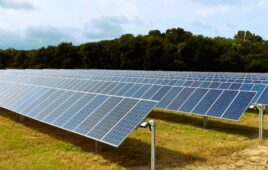This installation tip was provided by Auston Taber, senior service engineer at Ginlong Solis
Ginlong Solis has seen multiple issues with DC inputs to its inverters. In the past, we have taken responsibility for DC issues that our inverters reported by providing RMAs, performing firmware upgrades, changing out internal components and more. One particular customer was having problems regardless of how we attempted to resolve this issue. We performed all of the above and exhausted our remote troubleshooting efforts. At that point, we dispatched a technician to the site to determine the cause of the issues.
The customer reported that the inverter had multiple arc faults throughout the day and then it would have some level of underproduction, but the client never investigated the roof thoroughly. Upon our arrival, we found that the DC connectors on the home runs on the roof were melting.
They somehow stayed together in some cases, but they were creating a potentially hazardous condition on the roof with exposed DC connections lying around unprotected. We discovered that the subcontractor had used male DC pins inside both the male and female sides of the connector. These pins would just barely touch, which is what would cause the arc faults, and they would generate a lot of heat that would melt the connection and cause a bigger arc before disconnecting.
Upon inspecting the rest of the field-made DC connections, we found they were all done the same. After replacing the connectors, we had no more issues on the site, but both the customer and Ginlong spent a lot of time and effort resolving a straightforward issue that should never have happened. The contractor was using untrained labor to make these connections — someone who didn’t understand the basics of using the proper connection components.
Our pro tip is twofold: First, check your field-made DC connections prior to troubleshooting any other equipment. That should resolve any issues the inverters are reporting. The inverter is usually not the symptom; it’s one of the tools to help diagnose the issue. Second, make your DC connections correctly and use trained subcontractors familiar with building PV systems.






Tell Us What You Think!